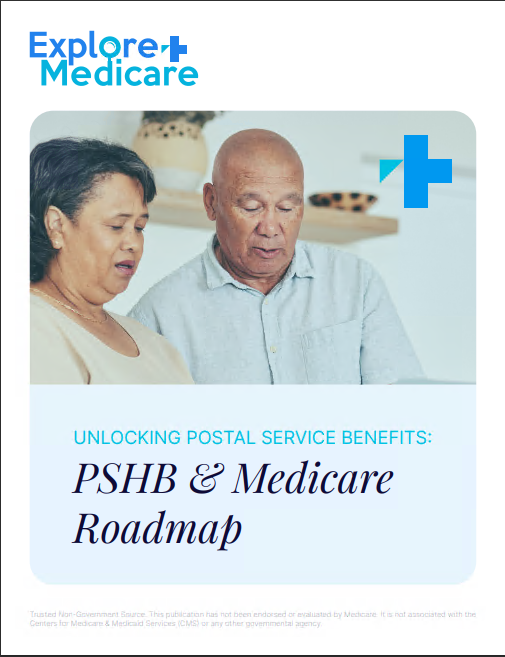Key Takeaways
-
Medicare costs in 2025 are higher than before due to structural changes in coverage and inflation-driven increases in standard premiums and deductibles.
-
Understanding what’s driving up your expenses can help you plan ahead and avoid unexpected out-of-pocket costs.
Medicare Costs Are Rising in 2025
If your Medicare coverage feels more expensive in 2025, you’re not alone. Many people enrolled in Medicare are noticing higher premiums, deductibles, and out-of-pocket expenses. These increases aren’t random or accidental. They stem from specific regulatory updates, inflationary pressures, and expanded program features that, while designed to help beneficiaries, also come with added costs.
Let’s break down what’s happening so you can get a clearer picture of why your Medicare bill might be higher than what you remember in past years.
The Impact of Inflation on Standard Costs
One of the main factors pushing Medicare costs higher in 2025 is inflation. Medical inflation tends to rise faster than general inflation, and that impacts the following areas:
Part A: Hospital Insurance
-
The inpatient hospital deductible for 2025 is now $1,676 per benefit period.
-
Coinsurance amounts have also gone up. For days 61-90 of a hospital stay, you’re paying $419 per day, and $838 per day for lifetime reserve days.
-
Skilled nursing facility care now carries a coinsurance of $209.50 per day for days 21-100.
Part B: Medical Insurance
-
The standard monthly premium has risen to $185.
-
The annual deductible is $257.
-
Higher-income individuals continue to pay more due to the Income-Related Monthly Adjustment Amount (IRMAA), which has also seen bracket adjustments.
These are significant increases compared to 2024, and they affect everyone enrolled in Original Medicare.
Changes in Part D Prescription Drug Coverage
Medicare Part D has seen one of the biggest structural changes in 2025. The coverage gap, often referred to as the “donut hole,” is gone. Now, there are three clear phases:
-
Deductible Phase: You pay out-of-pocket until your spending reaches $590.
-
Initial Coverage Phase: Your plan covers most costs, and you pay a percentage.
-
Catastrophic Coverage Phase: Once you hit $2,000 in out-of-pocket expenses, you pay nothing more for the rest of the year.
While this change brings long-term relief, especially for those who take high-cost medications, it can also lead to higher premiums due to the expanded financial protection the plans must offer.
Higher Out-of-Pocket Maximums in Some Plans
In 2025, the out-of-pocket maximum for some Medicare Advantage plans is allowed to go as high as:
-
$9,350 for in-network services
-
$14,000 for combined in- and out-of-network care
Even though Original Medicare doesn’t have a cap on out-of-pocket costs, the rising limits in Medicare Advantage plans are important to watch, especially if you use both in-network and out-of-network services. These figures don’t even include the cost of services not covered by Medicare, such as dental, vision, or hearing.
Medicare Part B IRMAA Threshold Adjustments
The Income-Related Monthly Adjustment Amount (IRMAA) continues to impact those with higher incomes. For 2025, the income thresholds are:
-
$106,000 for individuals
-
$212,000 for couples filing jointly
If your modified adjusted gross income (MAGI) from your 2023 tax return exceeds these thresholds, you’re paying more for Part B and possibly Part D. These thresholds are adjusted annually, often resulting in more people being affected even if their income hasn’t changed significantly.
Legislative Changes That Affect Your Costs
Medicare isn’t immune to policy changes. Several 2025 legislative updates are now active:
-
Prescription Payment Plan: This new option lets you spread prescription drug costs throughout the year in monthly installments instead of paying all at once. Helpful for budgeting, but may add administrative fees in some cases.
-
Medicare Drug Price Negotiations: While these negotiations aim to lower drug prices long-term, the current effect has been mixed. Some plans have increased premiums to offset anticipated revenue reductions.
While these changes are intended to improve affordability over time, the short-term result has been higher costs in many areas of Medicare.
Late Enrollment Penalties Continue to Accumulate
If you delayed enrolling in Medicare when you were first eligible and didn’t have qualifying coverage, you may face lifetime penalties:
-
Part B: A 10% penalty for every full 12-month period you were eligible but not enrolled.
-
Part D: A penalty calculated by multiplying 1% of the national base premium by the number of months you went without creditable coverage.
These penalties are added to your monthly premiums for as long as you have Medicare and can significantly drive up your annual costs.
Coordination with Other Coverage May Cost More
Some people coordinate Medicare with employer coverage, retiree insurance, or Medicaid. In 2025, more plans are adjusting their coordination of benefits. For instance:
-
Employer plans might cover fewer costs once you enroll in Medicare.
-
Dual eligibility with Medicaid may come with stricter asset reviews.
The shift in how these plans integrate with Medicare can leave you paying more out of pocket unless you revisit your options regularly.
Supplemental Coverage May Not Offset All Increases
Medigap policies (also known as Medicare Supplement Insurance) can help fill in gaps, but they, too, have seen cost increases in 2025. Premiums vary depending on your age, plan, and location, and while they offer predictable out-of-pocket spending, the base cost of holding one continues to rise.
If you’re considering switching Medigap plans, underwriting requirements may limit your options unless you’re in a guaranteed issue period. Always compare what you’d save on care versus what you’ll pay in premiums.
Expanding Medicare Benefits Comes at a Cost
Some areas of Medicare have been enhanced in 2025, and while these additions can be helpful, they’re also part of why your costs are climbing. Expanded benefits include:
-
Broader Telehealth Coverage: More services are eligible for remote visits.
-
Preventive Screenings: More tests and check-ups are now covered.
-
Mental Health Services: Greater access to therapy, psychiatric evaluations, and counseling.
These changes reflect a positive step toward comprehensive care, but they also raise overall program costs, which often trickle down to beneficiaries.
Annual Open Enrollment Changes Can Bring Surprises
Each year, Medicare enrollees receive an Annual Notice of Change (ANOC). In 2025, more plans have adjusted:
-
Premiums
-
Deductibles
-
Drug formularies
-
Provider networks
If you didn’t review your ANOC carefully during the previous Open Enrollment (October to December 2024), you may be facing higher costs this year simply because your plan changed behind the scenes.
It’s essential to reassess your coverage every year, even if you think nothing’s changed on your end.
Why Monitoring Your Medicare Plan Matters Now More Than Ever
With so many moving parts in 2025, staying informed isn’t optional. If you don’t keep track of premium adjustments, new benefit structures, or drug coverage changes, you could be leaving money on the table or paying more than necessary.
Consider:
-
Setting reminders to review your plan annually
-
Calculating total yearly costs, not just monthly premiums
-
Comparing multiple plan options during enrollment periods
If you’re already enrolled, you can still make changes during the Medicare Advantage Open Enrollment Period from January 1 through March 31.
Your 2025 Medicare Experience Depends on Awareness
Costs are rising in 2025, but that doesn’t mean you’re helpless. Being aware of the specific drivers of higher expenses allows you to make smarter, more strategic decisions about your care and your coverage.
Always review your plan details, evaluate your healthcare needs annually, and stay updated on program changes. If things feel overwhelming, you don’t have to go it alone.
For personalized support, get in touch with a licensed agent listed on this website to get clear, professional advice on your Medicare choices.









